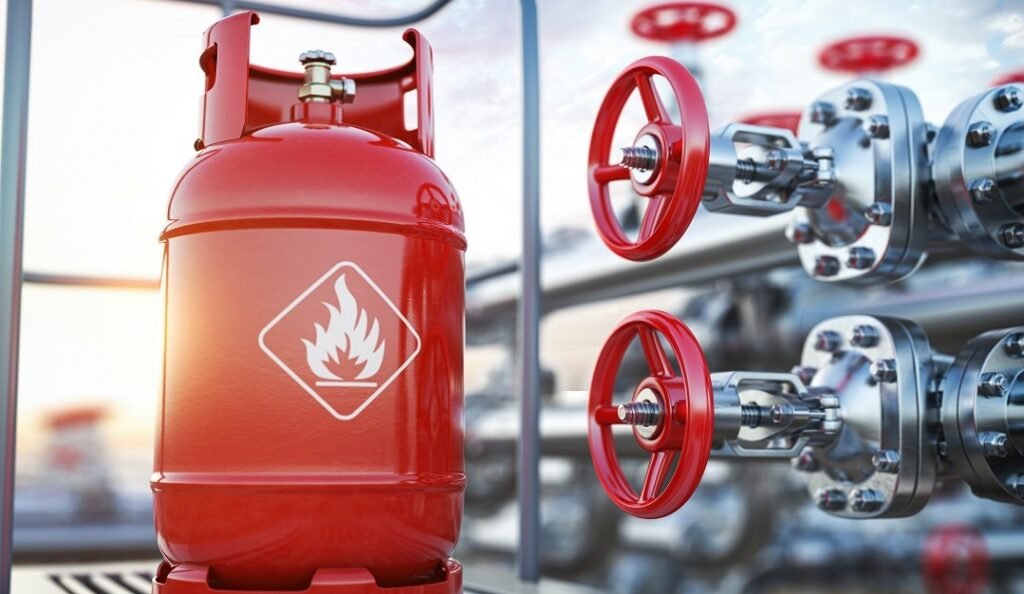On November 30, 2020, the Ministry of Industry and Trade of Vietnam issued the Circular No. 32/2020/TT-BCT on Promulgating the National Technical Regulation QCVN 8:2020/BCT on Safety of Liquefied Petroleum Gas (LPG) Containers. This technical regulation stipulates technical requirements for the design, manufacture, import, distribution, use, repair, repair, fixation, check, testing, and inspection of fixed LPG containers. Note that this regulation does not apply to cooling containers, containers for transportation, and containers being used for distillation or separation processes. This technical regulation will enter into force on June 1, 2021.
This technical regulation can be downloaded at:
https://sct.travinh.gov.vn/SiteFolders/sct/01%20SoCT/05%20VanBan%20BoCT/1_tt_2020_32_202012030741504916359_20201203074217.pdf
Classification of LPG containers
This technical regulation classifies LPG containers into three types: above-ground containers, underground containers, and mounded containers (installed on the ground and covered with sand or soil).
Technical requirements:
The requirements set by this regulation are classified into 2 types: General requirements and Specific requirements.
- General requirements
- LPG Containers must be designed, manufactured, tested and labeled in accordance with this technical regulation and related laws and regulations.
- Equipment and accessories used for handling LPG containers must be dedicated to LPG containers.
- Any LPG containers that are deformed, over-polished or corroded must not be used.
- Repairs and refurbishments of LPG containers must be carried out in accordance with applicable standards set by the relevant manufactures.
- Any outdoor or indoor unit such as those of an air conditioner must not be installed in the container.
- Inspection of LPG containers may be carried out pursuant to technical standards that are requested by user or manufacturer facilities provided that the standards ensure a higher level of safety compared to the requirements set forth in this technical regulation.
- Specific requirements
|
No. |
Item |
Major requirements |
| 1 | Requirements on design and manufacturing of LPG containers | Design, pressure, degree of vacuum, materials, connecting parts, valves, etc. (see Table 1 of QCVN 02:2020/BCT) |
| 2 | Requirements on installation | Installation position and safe distance (see Tables 2 and 3 of QCVN 02:2020/BCT), the number of above-ground containers present in an identical group (see Table 4 of QCVN 02:2020/BCT), discharge channels, installation of underground/buried containers, etc. |
| 3 | Requirements on LPG container’s foundation | Design, pressure resistance, welding to the container, design, fire resistance, and water resistance of the foundation base, etc. |
| 4 | Regulations on electrical safety | Classification of dangerous areas (see Table 5 of QCVN 02:2020/BCT), electrical equipment, measures for ensuring electrostatic safety, etc. |
| 5 | Requirements on fire prevention and extinguishment | Ventilation design, fire prevention and fighting equipment, evacuation routes, cooling water, etc. |
| 6 | Requirements on operation of LPG containers | Operation procedures, placement of safety rules and accident responding procedure manuals, operation/repairing logbooks, safety distance from the LPG filling point by a tank truck (see Table 6 of QCVN 02:2020/BCT), the maximum loading amount (90% of the container), corrosion resistance of the container, daily inspection, etc. |
| 7 | Requirements on maintenance | Maintenance personnel, procedures, implementation of regular maintenance (at least every 5 years), documentation of maintenance, etc. |
| 8 | Regulations on inspections and tests | Tests on pressure and containment performance, thickness measurement, magnetic measurement, etc. |
| 9 | Regulations on inspections | Deadline and format of regular inspections, abnormality inspections, risk-based inspection (RBI), inspection procedures and documents, etc. |
The list of Tables included in this technical regulation is as follows.
Table 1 Minimum outflow of safety valves for underground containers and mounded containers
Table 2 Safe distance between LPG containers and hydrogen containers or oxygen containers
Table 3 Minimum safe distance between LPG containers and construction sites or buildings or offices and that between LPG containers
Table 4 Quantity of above-ground containers within the same group and safe distance between different groups
Table 5 Regulations on dangerous areas in terms of electrical equipment in areas having LPG containers
Table 6 Safe distance between a LPG filling point by a tank truck or tank wagon and LPG containers
Management rules
Before putting any LPG container into operation and use, the conformity of the container to this technical regulation must be declared. The conformity assessment must be carried out in accordance with Method 8: Test or inspection of all products and goods. In addition, the declaration of conformity and the designation of the organization that can approve the declaration of conformity must be made in accordance with the Circular 36/2019/TT-BCT on Quality Management of Products and Goods under the Ministry of Industry and Trade’s Responsibility.
 MOIT of Vietnam publishes new technical regulation on safety requirements for LPG cylinders
MOIT of Vietnam publishes new technical regulation on safety requirements for LPG cylinders 

























